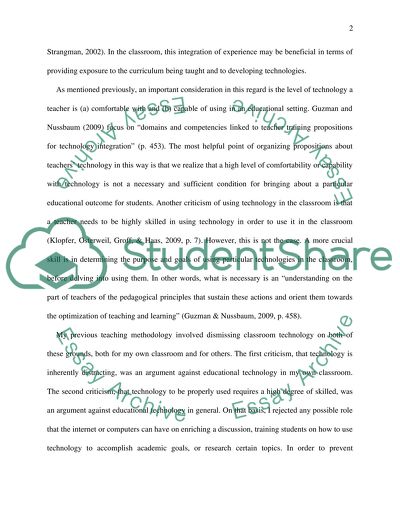Importance of Using Technology in the Classroom: How I felt Before and Research Paper. Retrieved from https://studentshare.org/education/1433399-importance-of-using-technology-in-the-classroom
Importance of Using Technology in the Classroom: How I Felt Before and Research Paper. https://studentshare.org/education/1433399-importance-of-using-technology-in-the-classroom.


